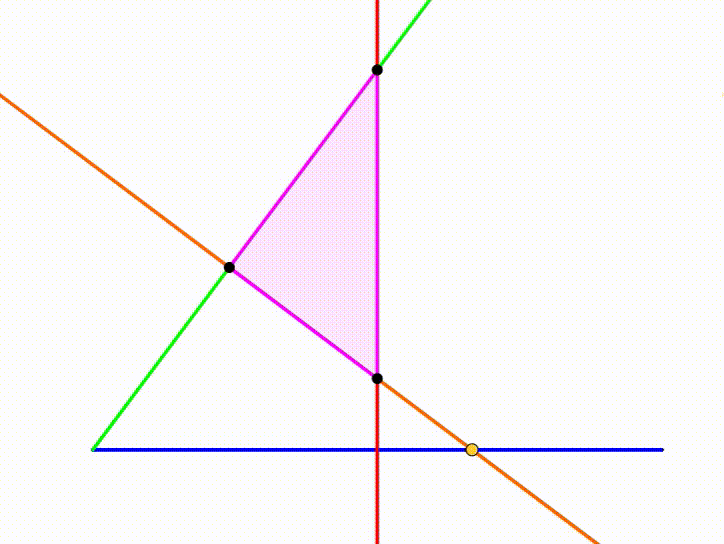Dynamic Geometry: P107
 In the diagram, the blue triangle has a base of length
, an angle (cyan) measuring
, and a variable angle (bottom left) (
). The red point is the circumcenter, the green point is the orthocenter and the yellow point is the centroid. Each of these points traces a
locus
. The three loci are intersecting to form a purple triangle. The area of this triangle can be expressed as
, where
and
are coprime positive integers. Find
.
In the diagram, the blue triangle has a base of length
, an angle (cyan) measuring
, and a variable angle (bottom left) (
). The red point is the circumcenter, the green point is the orthocenter and the yellow point is the centroid. Each of these points traces a
locus
. The three loci are intersecting to form a purple triangle. The area of this triangle can be expressed as
, where
and
are coprime positive integers. Find
.
The answer is 19.
This section requires Javascript.
You are seeing this because something didn't load right. We suggest you, (a) try
refreshing the page, (b) enabling javascript if it is disabled on your browser and,
finally, (c)
loading the
non-javascript version of this page
. We're sorry about the hassle.
Let the variable triangle be A B C , where A B = 4 and ∠ B = tan − 1 4 3 , the purple triangle be S T U , and the locus of the orthocenter (the green line) intersects B C at N .
Since the orthocenter is the meeting point of altitudes from the three vertices, A N must be perpendicular to B C . Also since the circumcenter is the point where the perpendicular bisectors of the three sides meet, the locus of circumcenter (the red line) is the perpendicular bisector of the fixed side A B .
Let the midpoint of A B be M ( 0 , 0 ) , the origin of the x y -plane, and the variable vertex C be ( x , y ) . Then the line B C is given by x − 2 y − 0 = − 4 3 ⟹ 4 y + 3 x = 6 and the centroid G ( x g , y g ) :
⎩ ⎪ ⎨ ⎪ ⎧ x g = 3 − 2 + x + 2 = 3 x y g = 3 0 + y + 0 = 3 y ⟹ 4 y g + 3 x g = 3 4 y + 3 x = 3 6 = 2
Therefore the equation of the locus of centroid (the orange line) is 4 y + 3 x = 2 , which is parallel to B C . Let the orange line intersect A B and C A at D and E respectively. When y = 0 , x = M D = 3 2 . Since D U is parallel to B C , △ A D U and △ A B N are similar and are 3 - 4 - 5 right triangles. Similarly, △ M D T and △ S T U are also 3 - 4 - 5 right triangles. Then we have:
U T = U D − T D = 5 4 ⋅ A D − 4 5 ⋅ M D = 5 4 ( 2 + 3 2 ) − 4 5 ⋅ 3 2 = 1 0 1 3
Then U S = 3 4 ⋅ U T and the area of △ S T U , [ S T U ] = 2 U S ⋅ U T = 2 1 ⋅ 3 4 ⋅ 1 0 2 1 3 2 = 1 5 0 1 6 9 . And p − q = 1 6 9 − 1 5 0 = 1 9 .